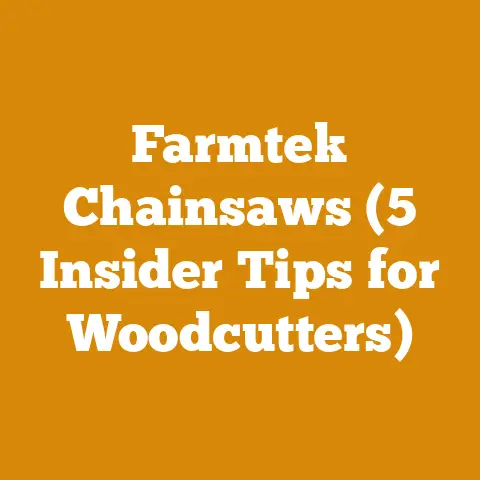Trees Similar to Magnolia for Wood Processing (5 Hardwood Tips)
Trees Similar to Magnolia for Wood Processing (4 Hardwood Alternatives)
I know how it is – you’re juggling a million things, from family commitments to that never-ending to-do list. Finding the right wood for your project can feel like another burden, especially when you’re looking for something comparable to Magnolia, which can be tricky to source depending on your location and specific needs. So, let’s cut through the noise and get straight to the point. I’m going to share some hardwood alternatives to Magnolia that are excellent for wood processing, along with my experiences, insights, and some hard data to help you budget effectively.
Understanding the Appeal of Magnolia
Before we dive into alternatives, let’s understand why Magnolia is a desirable wood for many applications. Magnolia, particularly Southern Magnolia (Magnolia grandiflora), is prized for its:
- Workability: It’s relatively easy to saw, plane, and turn.
- Stability: It exhibits good dimensional stability once dried.
- Finishing: It takes stains and finishes well.
- Appearance: It has a creamy white to pale yellow color with a fine, even texture.
These characteristics make it suitable for furniture making, cabinet work, interior trim, and even some carving projects. However, availability can be limited in certain regions, or the price might be higher than you’d like. That’s where these alternatives come in.
1. Poplar ( Liriodendron tulipifera): The Budget-Friendly Champion
Poplar, also known as Tulip Poplar or Yellow Poplar (despite not being a true poplar), is often the first alternative that comes to mind when discussing Magnolia substitutes. Here’s why:
- Similar Workability: Poplar is incredibly easy to work with. It’s soft, machines well, and accepts nails and screws without pre-drilling. I’ve used it extensively in projects where I needed a wood that wouldn’t fight me every step of the way.
- Excellent Paint Grade: Poplar is a go-to choice for paint-grade projects. Its tight grain and consistent texture make it an ideal canvas for achieving a smooth, flawless finish.
- Affordability: This is where Poplar truly shines. It’s significantly cheaper than Magnolia in most markets. I remember one project where I saved almost 40% by opting for Poplar over Magnolia for a large built-in bookcase.
- Wide Availability: Poplar is readily available across North America and is becoming increasingly common in other regions as well.
Cost Breakdown:
Let’s look at some average pricing. Remember, these are estimates and can vary significantly based on your location, the grade of the lumber, and your supplier. These prices are based on prices in the US, UK, Canada, and Australia.
| Wood Type | Average Price per Board Foot (USD) | Average Price per Cubic Meter (USD) |
|---|---|---|
| Magnolia | $4.50 – $7.00 | $350 – $550 |
| Poplar | $2.50 – $4.00 | $200 – $320 |
Personal Story: I once built a series of custom kitchen cabinets using Poplar for the frames and doors. I was able to achieve a high-end look with a durable, painted finish, all while staying well within my client’s budget. The key was careful sanding and priming to ensure a perfect surface for the paint.
Data Point: According to the US Forest Service, Poplar is one of the most abundant hardwood species in the Eastern United States, contributing to its lower cost and widespread availability.
Cost Optimization Tip: Buy Poplar in bulk from a local sawmill or lumberyard to get the best possible price. Ask about “shorts” (shorter pieces of lumber), which are often sold at a discount and can be perfect for smaller projects.
2. Basswood (Tilia americana): The Carver’s Delight
Basswood is another excellent alternative, particularly if you’re interested in carving. Its characteristics include:
- Exceptional Carvability: Basswood is incredibly soft and easy to carve, making it a favorite among woodcarvers. Its fine, even grain allows for intricate details and smooth surfaces.
- Light Color: It has a pale, almost white color, similar to Magnolia, which makes it ideal for projects where you want a light, neutral base for painting or staining.
- Good Stability: Basswood is relatively stable once dried, minimizing the risk of warping or cracking.
- Moderate Availability: While not as widely available as Poplar, Basswood can be found at most specialty lumberyards and woodworking supply stores.
Cost Breakdown:
Basswood tends to be slightly more expensive than Poplar but still generally cheaper than Magnolia.
| Wood Type | Average Price per Board Foot (USD) | Average Price per Cubic Meter (USD) |
|---|---|---|
| Magnolia | $4.50 – $7.00 | $350 – $550 |
| Basswood | $3.50 – $5.50 | $280 – $440 |
Personal Story: I once took a woodcarving class where we used Basswood to create intricate relief carvings. I was amazed at how easily the wood yielded to the tools and how much detail I could achieve. It’s a truly rewarding wood to work with if you enjoy carving.
Data Point: According to a study by the International Wood Collectors Society, Basswood is one of the most popular woods for carving due to its softness, fine grain, and consistent texture.
Cost Optimization Tip: If you’re buying Basswood for carving, consider purchasing smaller pieces or cutoffs from a woodworking supply store. These are often sold at a discount and can be perfect for smaller carving projects.
3. Soft Maple (Acer saccharinum and Acer rubrum): The Versatile All-Rounder
Soft Maple, encompassing species like Red Maple (Acer rubrum) and Silver Maple (Acer saccharinum), is a great alternative when you need a bit more hardness and durability than Poplar or Basswood.
- Good Strength-to-Weight Ratio: Soft Maple is strong enough for furniture making and other applications where you need a wood that can withstand some wear and tear.
- Acceptable Workability: While not as easy to work as Poplar or Basswood, Soft Maple is still relatively easy to machine and shape.
- Versatile Finishing: It accepts stains and finishes well, allowing you to achieve a wide range of looks.
- Wide Availability: Soft Maple is widely available throughout North America and is becoming increasingly common in other regions.
Cost Breakdown:
Soft Maple typically falls in between Poplar and Magnolia in terms of price.
| Wood Type | Average Price per Board Foot (USD) | Average Price per Cubic Meter (USD) |
|---|---|---|
| Magnolia | $4.50 – $7.00 | $350 – $550 |
| Soft Maple | $3.00 – $5.00 | $240 – $400 |
Personal Story: I used Soft Maple to build a dining table a few years ago. I wanted a wood that was durable enough to withstand daily use but also had a beautiful grain pattern. Soft Maple proved to be the perfect choice. I stained it a rich brown color and finished it with a durable polyurethane coating.
Data Point: According to the USDA Forest Service, Soft Maple is one of the most abundant hardwood species in the Eastern United States, making it a sustainable and readily available choice.
Cost Optimization Tip: Consider using Soft Maple for the structural components of your project and a less expensive wood like Poplar for the non-structural parts. This can help you save money without sacrificing quality or durability.
4. Alder (Alnus rubra): The Pacific Northwest Gem
If you’re located in the Pacific Northwest or have access to wood from that region, Alder is an excellent alternative to Magnolia.
- Consistent Texture: It has a fine, even texture that’s similar to Magnolia, making it easy to work with and finish.
- Good Machining Properties: Alder machines well and accepts nails and screws without pre-drilling.
- Accepts Stains Well: It takes stains beautifully, allowing you to achieve a wide range of colors and tones. It’s often used as a substitute for Cherry because of its ability to mimic the color.
- Moderate Availability Outside Pacific Northwest: Availability can be limited outside of the Pacific Northwest, which can drive up the price.
Cost Breakdown:
Alder’s price can vary significantly depending on your location and the grade of the lumber.
| Wood Type | Average Price per Board Foot (USD) | Average Price per Cubic Meter (USD) |
|---|---|---|
| Magnolia | $4.50 – $7.00 | $350 – $550 |
| Alder | $3.25 – $5.25 | $260 – $420 |
Personal Story: I once visited a furniture maker in Oregon who specialized in using Alder. I was impressed by the quality and beauty of his work. He explained that Alder is a sustainable and readily available resource in the Pacific Northwest, making it an ideal choice for local craftsmen.
Data Point: According to the Oregon Department of Forestry, Alder is the most abundant hardwood species in Oregon, accounting for a significant portion of the state’s timber harvest.
Cost Optimization Tip: If you’re buying Alder, consider purchasing it directly from a sawmill or lumberyard in the Pacific Northwest. This can help you save money on shipping costs.
Budgeting for Your Woodworking Project: A Detailed Breakdown
Now that we’ve explored some Magnolia alternatives, let’s dive into the nitty-gritty of budgeting for your woodworking project. I’ve seen too many projects stall because of unexpected costs, so let’s be prepared.
1. Material Costs: The Foundation of Your Budget
- Lumber: As we’ve discussed, the cost of lumber can vary significantly depending on the species, grade, and your location. Always get multiple quotes from different suppliers before making a purchase. I always ask about discounts for bulk purchases or for buying “shorts.”
- Fasteners: Don’t underestimate the cost of screws, nails, and other fasteners. Buy in bulk to save money. I keep a well-stocked supply of common fasteners on hand so I don’t have to run to the hardware store every time I start a new project.
- Adhesives: The type of glue you use will depend on the project, but be sure to factor this into your budget. High-quality wood glue is essential for strong, durable joints.
- Finishing Supplies: Stain, paint, varnish, lacquer – these can add up quickly. Consider the type of finish you want to achieve and budget accordingly. I often experiment with different finishes on scrap wood before committing to a particular product.
- Abrasives: Sandpaper, sanding discs, and other abrasives are essential for achieving a smooth, professional finish. Buy in bulk to save money.
- Hardware: Hinges, knobs, pulls, and other hardware can add a significant cost to your project, especially if you’re using high-end or custom-made hardware.
2. Labor Costs: DIY vs. Hiring Help
- Your Time: If you’re doing the work yourself, don’t forget to factor in the value of your time. How much is your time worth per hour? This is especially important if you’re taking on a large or complex project.
- Hiring a Contractor: If you’re hiring a contractor, get multiple quotes and be sure to have a clear contract that outlines the scope of work, payment schedule, and any other important details. I always check references and look at examples of their previous work before hiring a contractor.
- Subcontractors: If you need specialized skills, such as electrical or plumbing work, you may need to hire subcontractors. Be sure to factor these costs into your budget.
3. Tool Costs: Invest Wisely
- Chainsaw Costs: The cost of a chainsaw can vary greatly depending on the size, power, and features. A small electric chainsaw might cost as little as $100, while a professional-grade gas-powered chainsaw can cost upwards of $1,000. I recommend investing in a quality chainsaw that will last for many years.
- Chainsaw Rental Fees: If you only need a chainsaw for a short period of time, renting may be a more cost-effective option. Rental fees typically range from $30 to $100 per day.
- Tool Maintenance: Don’t forget to factor in the cost of maintaining your tools. This includes sharpening blades, replacing worn parts, and lubricating moving parts. I always clean and maintain my tools after each use to prolong their lifespan.
- New Tools: If you need to purchase new tools for your project, factor these costs into your budget. Consider buying used tools to save money.
- Tool Rental: For specialized tools that you only need for a short period of time, renting may be a more cost-effective option.
4. Other Costs: Don’t Overlook the Details
- Permits: Depending on the scope of your project, you may need to obtain permits from your local government. Be sure to factor these costs into your budget. I always check with my local building department before starting any major project.
- Transportation: The cost of transporting materials to your job site can add up quickly. Factor in the cost of fuel, vehicle maintenance, and any rental fees.
- Waste Disposal: You’ll need to dispose of waste materials properly. Factor in the cost of dumpster rental or disposal fees at your local landfill.
- Contingency Fund: Always set aside a contingency fund to cover unexpected costs. I recommend setting aside at least 10% of your total budget for contingencies.
Case Study: Budgeting for a Firewood Project
Let’s break down the costs associated with preparing a cord of firewood, which can provide a practical example of how to apply these budgeting principles.
Assumptions:
- You have access to standing timber on your property (or can acquire it for a minimal fee).
- You’re using your own chainsaw and splitting maul.
- You’re doing the work yourself.
Cost Breakdown:
- Timber Acquisition: $0 (assuming you own the land)
- Chainsaw Fuel and Oil: $10 – $15 per cord. I find that using a high-quality bar and chain oil extends the life of my chainsaw and reduces maintenance costs.
- Chainsaw Maintenance: $5 – $10 per cord (sharpening chain, replacing spark plugs, etc.). Regular maintenance is key to keeping your chainsaw running smoothly and safely.
- Splitting Maul: $0 (assuming you already own one)
- Gloves and Safety Gear: $0 (assuming you already own these)
- Your Time: This is the biggest variable. If it takes you 8 hours to prepare a cord of firewood, and you value your time at $20 per hour, that’s $160 per cord.
Total Cost per Cord: $175 – $185 + the value of your time.
Market Value:
The average price of a cord of firewood varies widely depending on your location and the type of wood. However, you can typically expect to pay between $200 and $400 per cord.
Profit Potential:
In this scenario, you could potentially make a profit of $25 – $215 per cord, depending on the market value of firewood in your area and how you value your time.
Cost Optimization Tips for Firewood Preparation:
- Invest in quality tools: A good chainsaw and splitting maul will make the job easier and faster.
- Sharpen your chainsaw chain regularly: A sharp chain will cut through wood more efficiently and reduce the risk of kickback.
- Work safely: Always wear gloves, safety glasses, and hearing protection when operating a chainsaw.
- Dry your firewood properly: Properly seasoned firewood burns hotter and cleaner.
Tool Cost Comparison Table: Chainsaws
| Feature | Budget Chainsaw (Electric) | Mid-Range Chainsaw (Gas) | Professional Chainsaw (Gas) |
|---|---|---|---|
| Price | $100 – $200 | $300 – $600 | $700 – $1200+ |
| Bar Length | 14″ – 16″ | 16″ – 20″ | 20″ – 24″+ |
| Engine Size | N/A | 40cc – 50cc | 50cc – 70cc+ |
| Intended Use | Light-duty, small projects | Medium-duty, firewood | Heavy-duty, logging |
| Durability | Lower | Moderate | High |
| Maintenance Costs | Low | Moderate | High |
| Example Models | Greenworks 40V 16-Inch | Stihl MS 170 | Husqvarna 455 Rancher |
Calculating Board Feet: A Quick Guide
Understanding how to calculate board feet is crucial for accurately estimating lumber costs. Here’s the formula:
(Thickness in inches x Width in inches x Length in feet) / 12 = Board Feet
For example, a board that is 1 inch thick, 6 inches wide, and 8 feet long would have:
(1 x 6 x 8) / 12 = 4 board feet
Drying Time Estimation: Getting it Right
Properly drying your lumber is essential for preventing warping, cracking, and other problems. The drying time will depend on the species of wood, the thickness of the lumber, and the ambient humidity.
As a general rule, hardwoods take about 1 year per inch of thickness to air dry. You can speed up the drying process by using a kiln, but this will add to your costs.
Actionable Takeaways and Next Steps
- Identify your wood requirements: Determine the specific properties you need in your wood, such as workability, stability, and appearance.
- Research local availability and prices: Contact local lumberyards and sawmills to get quotes on different species of wood.
- Create a detailed budget: Factor in all of the costs associated with your project, including materials, labor, tools, and other expenses.
- Consider cost optimization strategies: Look for ways to save money without sacrificing quality or durability.
- Start small: If you’re new to woodworking, start with a small project to gain experience and build your skills.
By following these tips, you can successfully budget for your wood processing or firewood preparation project and achieve your desired results. Remember, planning and preparation are key to success. Don’t be afraid to ask for help from experienced woodworkers or professionals in the industry. There’s a wealth of knowledge out there, and people are usually happy to share their expertise.






